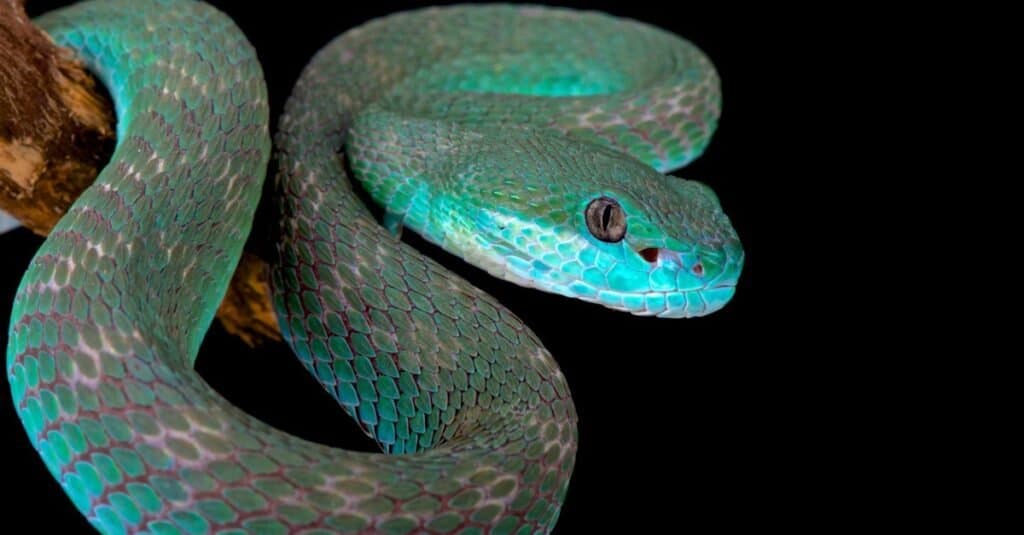Introduction
When it involves the interesting world of serpents, few varieties record the creativity fairly like the baby tiger snake. Known for their distinct pigmentation and powerful venom, these snakes are an integral part of Australia's distinct community. In this extensive write-up, we will delve into various aspects of baby tiger serpents, including their habits, environment, and just how to securely communicate with them. Whether you're a wildlife lover or just curious about these animals, recognizing infant tiger serpents can help foster a much deeper gratitude for nature.
Baby Tiger Snakes: What You Need to Know About Their Habits and Habitat
What Are Infant Tiger Snakes?
Baby tiger serpents are adolescent forms of the extremely poisonous species known scientifically as Notechis scutatus These serpents are primarily discovered in coastal areas of Australia, particularly in Tasmania and southern Victoria. As they grow, their pigmentation changes from a more low-key scheme to the particular yellow and black bands that give them their name.
One notable facet of child tiger snakes is their size; hatchlings typically gauge around 25-30 centimeters in size. Regardless of their tiny stature, they possess a surprising quantity of venom that can be damaging to humans if bitten.
Physical Characteristics
Tiger serpents possess several crucial physical attributes:

- Coloration: The distinctive banding pattern usually comes to be much more obvious as they mature. Size: Grownups can reach lengths of as much as 2 meters. Body Shape: They have a durable body that aids in swimming and terrestrial movement.
Where Do Baby Tiger Snakes Live? Understanding Their Habitat
Understanding the environment preferences of child tiger snakes is important for both preservation efforts and public safety and security. These serpents grow in different atmospheres:
- Wetlands: Marshes and swamps supply sufficient hunting grounds. Coastal Regions: Commonly located near beaches where they can hunt for prey. Woodlands: Thick plants provides cover from predators.
Geographical Distribution
Tiger serpents are mainly found along Australia's southerly coast, including:
- Tasmania: Home to among the most infamous populations. Victoria: Especially in areas near water bodies.
Are Tiger Snakes Venomous? A Deep Dive into Their Venom
One typical inquiry occurs when going over infant tiger serpents: "Are tiger serpents venomous?" The response is a resounding yes!

Venom Composition
The venom of tiger serpents contains neurotoxins that can create paralysis, coagulopathy (blood clotting problems), and possibly fatality if without treatment. Below's what you need to understand:
- Effects on Humans: An attack from a tiger serpent can bring about symptoms like swelling, discomfort at the bite site, nausea or vomiting, and also respiratory failure.
Comparison with Other Venomous Snakes
In comparison to various other Australian snakes such as the eastern brownish snake or king brownish snake, tiger serpent poison is taken into consideration among the most potent. Nevertheless, fatalities are unusual because of enhanced medical therapies and accessibility to antivenom.
Behavioral Patterns of Infant Tiger Snakes
Understanding how infant tiger serpents act is essential for those that reside in or check out areas where these reptiles are prevalent.
Nocturnal Habits
Most infant tiger snakes display nighttime habits. They tend to forage for food throughout cooler night temperatures. This flexibility aids them stay clear of predators while enhancing their searching efficiency.
Hunting Techniques
Their searching methods include:
- Ambush Predation: Waiting still until target comes close. Active Foraging: Proactively moving through plants or along waterways searching for food.
First Help for Snake Bites: What You Must Know
Despite being remarkable creatures, experiences with baby tiger snakes can bring about hazardous circumstances if attacks take place. Recognizing first aid procedures can conserve lives.
Immediate Tips After a Bite
Remain calmness; panic enhances heart rate. Immobilize the affected arm or leg utilizing a splint or bandage. Seek immediate medical attention-- antivenom might be necessary.Creating a Serpent Bite First Aid Kit
A well-prepared first aid package should consist of:
|Item|Function|| ------------------------------|--------------------------------------|| Compression plaster|To debilitate the arm or leg|| Splint|Stabilizes damaged bones or treat snake bite first aid joints|| Antihistamines|Relieves allergic reactions|| Emergency get in touch with numbers|Quick accessibility throughout emergency situations|
Common Misconceptions Concerning Tiger Snakes Debunked
Many misconceptions surround these intriguing reptiles; allow's make clear some false impressions generally held by people.
Myth # 1: All Tiger Snakes Are Aggressive
While some people might exhibit protective actions when threatened, not all tiger snakes display aggressiveness in the direction of human beings unless provoked.
Myth # 2: Child Tiger Snakes Are Much Less Dangerous Than Adults
This misconception might not be better from the truth! Child tiger snakes include virtually as much venom as adults relative to their dimension; thus they pose considerable threats if bitten.
Allergic Reactions
FAQs Regarding Child Tiger Snakes
What do child tiger snakes eat?- They mostly eat tiny mammals, birds, frogs, and fish.
- Look for slim bodies with pale banding patterns that end up being more noticable as they mature.
- Yes! Birds of target and larger reptiles might target them.
- Typically every few weeks as they grow rapidly throughout their early life stages.
- While some individuals do maintain them illegally without permits due to their unsafe nature; it's usually not advised given their venomous status.
- With punctual clinical therapy-- consisting of antivenom-- the survival price is high!
Conclusion
In summary, https://marketerly2.gumroad.com/p/what-to-include-in-your-family-s-snake-bite-first-aid-kit-54a9ef0d-8a2a-4849-b123-183cb32c57ce understanding infant tiger serpents-- what they eat, where they live, just how they behave-- can furnish us with important knowledge about these impressive yet hazardous animals. The value of education bordering first aid actions can not be overstated; knowing how to respond successfully after a bite might conserve lives while fostering respect for our crawling neighbors within Australia's abundant biodiversity range.

By appreciating these snakes' duties within environments-- and acknowledging potential threats-- we advertise conjunction instead of fear-based reactions toward each other's existence in nature's grand tapestry! Whether you're a passionate hiker contemplating your following adventure or simply interested about neighborhood wild animals encounters near home-- this guide functions as your relied on referral point on the enigmatic globe inhabited by our close friends-- the wonderful baby tiger snake!